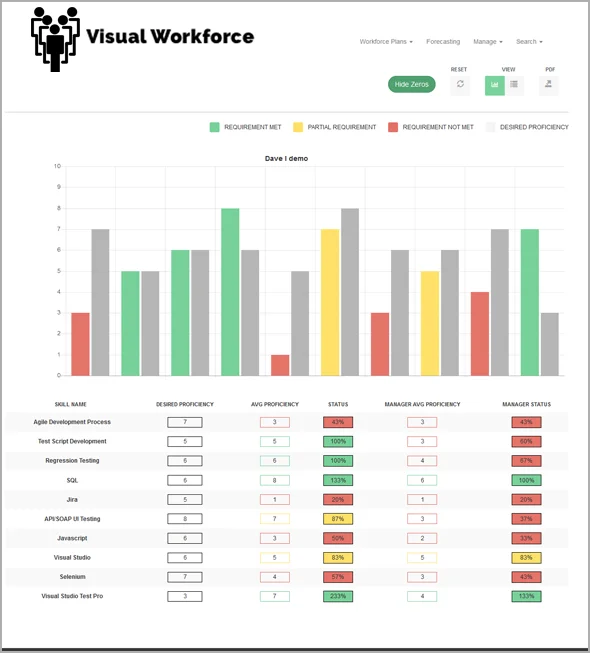5 Lessons to Learn from Amazon's Investment in Upskilling
In early July, Amazon made waves with its announcement that the company will pledge over $700 million to upskill more than 100,000 of its U.S. employees. Amazon's big move comes during a critical shift in the U.S. workforce.
An urgent need for new digital skills and a small talent pool leaves a massive skills gap in our workforce. People cannot keep up with the pace of digital transformation, while employers are struggling to recruit people with the right skills to adopt new technology. Amazon recognizes these changes and is taking proactive steps to lead their company into the future of work. By investing in upskilling their employees now, they are setting the stage for long-term, sustainable success in the digital age.
Read More
How to Avoid A Skills Gap in a Growing Venture
The skills gap is growing problem facing numerous industries. No company, big or small, is exempt from a potential skills shortage, particularly in technical skills. According to a recent study, 60% of U.S. employers have job openings that stay vacant for 12 weeks or longer. On average these vacancies are costing businesses up to $800,000 annually.
However, the implications of a skills gap takes on a different, often more intense meaning for a growing venture than an established corporation.
Read More
6 Steps to Use Visual Data to Build Effective Employee Growth Plans
Focusing on employee growth is crucial to the success of any organization. While engagement is important, investment in hard and soft skills will return exponential benefits in productivity and performance.
There are also several indirect benefits to Skills Planning, like talent retention, that contribute to your company’s competitive advantage and bottom line. The top reason people left their jobs in 2018 was boredom. Employees didn’t feel like their managers were challenging them enough, so they sought career growth elsewhere. Additionally, a recent survey found 42% of respondents highlighted learning and professional development as the most important factors when deciding where to work.
Read More
E-book: Iceberg Ahead- How To Create a Better Team Through Visual Data
Every day the leaders, managers, and CEOs of the business world proceed at the helm of their vessel, without an accurate understanding of the state of the company below decks. Complacency creates an environment of reactive resource planning. In business, you need to be able to shift course quickly, and the linchpin is having accurate information about your team and the skills needed to keep alignment. Ignoring this aspect of leading people can carry grave consequences.
Read More
How Skills Planning Can Help Your Company Achieve 6 Types of Transformations
All organizations will face a significant change at some point during their existence. How business leaders respond to these changes will determine the success -- and sometimes survival -- of the organization. While aligning resources, capital, and systems with business goals is a crucial part of a successful transformation, aligning your skills and capabilities is equally important.
Read More
The Power of Data Visualization
Organizations are leveraging data to improve all aspects of business. Many industries are adopting a data-driven mindset to make better business decisions, personalize the customer experience, and enhance products. Even non-technical industries, like fashion and sports, are finding unique ways to incorporate data into their products and operations.
The quantity of available data is massive. Nearly every action in a business can be tracked, analyzed, and improved. However, how we translate big data into actionable insights is still a work in progress.
Read More
Case Study: Bridging the IT Skills Gap at a Global Enterprise
ChildFund International’s IT team planned to move its legacy, inhouse customer-relationship management software to cloud-based Salesforce.com. CIO Cheri Spence wanted to better understand the range of skills on her 30-person team and get a sense of who could make the transition to the cloud-based platform.
Read More
Visual Workforce Will Be Exhibiting At The 2019 ACEC Annual Convention, May 5-8
Visual Workforce will be exhibiting at Booth #201 at the 2019 ACEC Annual Convention and Legislative Summit, being held at Marriot Wardman Park in Washington D.C., May 5-8, 2019.
Read More
4 Myths About Tracking and Identifying Skills Gaps
A skills gap can be a costly, time-consuming problem for businesses. As industries continue to shift towards digital, companies need to find more proactive approaches to avoid gaps, instead of managing them as they appear.
How Do Companies Currently Track and Identify Skills Gaps?
While many companies recognize the need to optimize their workforce, not everyone has developed an ideal method for tracking and identifying skills gaps. Here are some methods we see companies using today.
Read More
How Do We Currently Manage Skills?
How organizations manage these assets determines their future. Yet, skills management is most often ignored or neglected by employers. Too often, skills are managed on resumes and rarely updated spreadsheets. Few organizations have an accurate inventory of skills. Work gets assigned without knowing the full capabilities of team members. Planning occurs without an accurate picture of vital assets.
Read More
Visual Workforce Launch Announcement
Finally, there’s an easy way for IT organizations to create and maintain a living technology, skills, and competency inventory: Visual Workforce.
Visual Workforce is IT focused and helps organizations identify their best employees and map contributions to strategic objectives.
Read More











